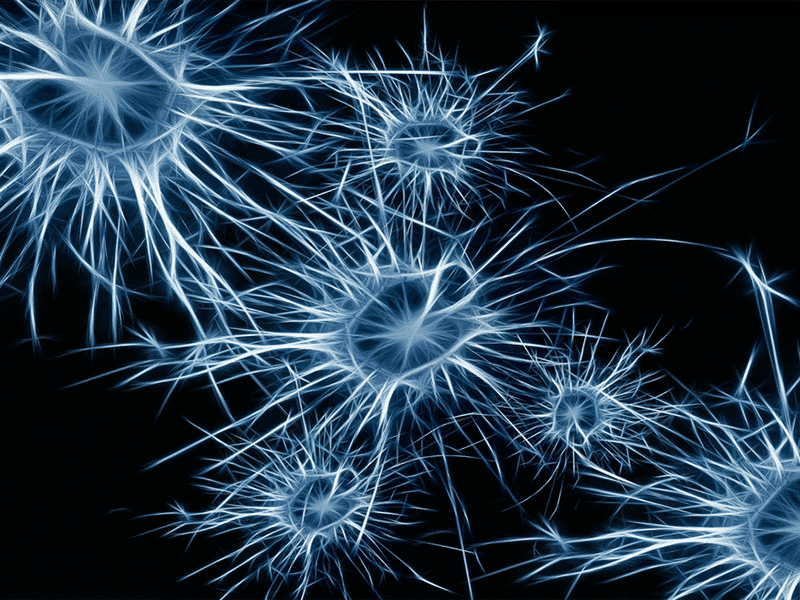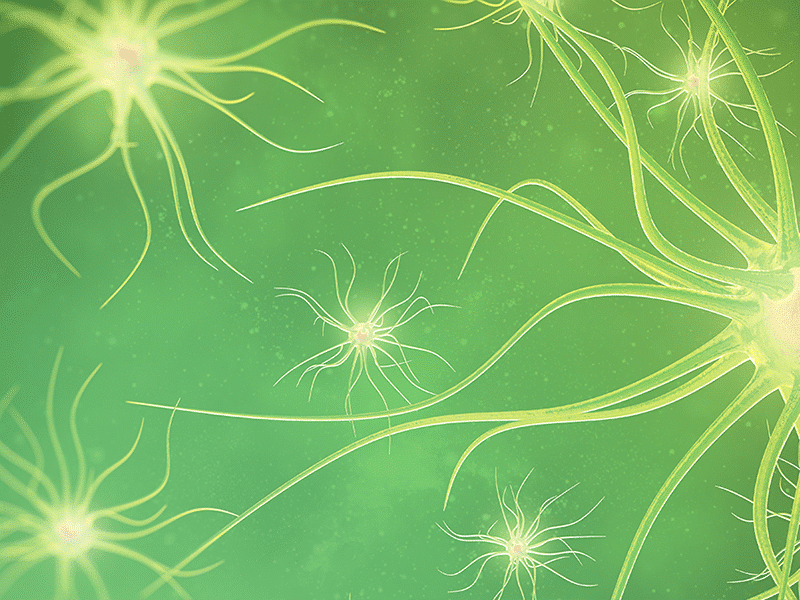アーカイブから
CBDとパーキンソン病
エンドカンナビノイド・システムと消化器系のバランスの崩れがパーキンソン病に大きく影響します。医療大麻が治療の助…
エンドカンナビノイド・システムと脳の関係
精神的な健康、認知力、感情その他、脳が司っている生体プロセスを調節しているのは、カンナビノイドに反応する受容体…
レビュー論文:
- 2022: A review for practitioners of using CBD for Parkinson’s disease
Cannabidiol (CBD) Consideration in Parkinson Disease - 2021: This review looks at 18 studies showing how cannabinoids & resveratrol help with neuroprotection in Parkinson’s disease
The Neuroprotective Effects of Cannabis-Derived Phytocannabinoids and Resveratrol in Parkinson’s Disease: A Systematic Literature Review of Pre-Clinical Studies - 2021: This review looks at how the ECS alters over the course of Parkinson’s disease & why this suggests cannabinoids as a treatment
Parkinson’s Disease related alterations in cannabinoid transmission - 2021: This review looks at endocannabinoid signaling in Parkinson’s disease
Endocannabinoid Signaling in Parkinson’s Disease - 2021: A review of why CBD is helpful for Parkinson’s disease
Potential role of cannabidiol in Parkinson’s disease by targeting the WNT/β-catenin pathway, oxidative stress and inflammation - 2021: A review of the use of oral cannabinoids for seborrheic dermatitis , a common skin issue among Parkinson’s disease patients
A Review of the Current Evidence Connecting Seborrheic Dermatitis and Parkinson’s Disease and the Potential Role of Oral Cannabinoids - 2020: A review of the studies on cannabis for Parkinson’s disease
Medical cannabis as an alternative therapeutics for Parkinsons’ disease: Systematic review - 2020: A review of the neuroprotective effects of CBD for Parkinson’s
Cannabidiol as a Therapeutic Target: Evidence of its Neuroprotective and Neuromodulatory Function in Parkinson’s Disease - 2020: How the relationship between the endocannabinoid system and the microglia (immune cells of the brain) could benefit Parkinson’s patients
Microglial Phenotypes and Their Relationship to the Cannabinoid System: Therapeutic Implications for Parkinson’s Disease - 2020: For Parkinson’s disease, this intriguing review looks at complementary therapies to go along with dopamine replacement, including acupuncture, tai chi, qi gong, & cannabis
Complementary Therapies in Parkinson Disease: a Review of Acupuncture, Tai Chi, Qi Gong, Yoga, and Cannabis - 2020: Meta-review of cannabis & CBD for Parkinson’s
Parkinson’s Disease – Current Treatments and the Possible Use of Cannabis - 2019: CBD & cannabinoids for treating Parkinson’s as well as the dyskinesia from the L-DOPA
Cannabidiol and Cannabinoid Compounds as Potential Strategies for Treating Parkinson’s Disease and L-DOPA-Induced Dyskinesia - 2019: CBD for treating Parkinson’s disease
Is cannabidiol the ideal drug to treat non-motor Parkinson’s disease symptoms? - 2017: On targeting the GPR55 receptor for Parkinson’s disease
GPR55: A therapeutic target for Parkinson’s disease?
研究のタイムライン
- 2022: In α-synucleinopathy (the buildup of α-synuclein in neurodegenerative diseases like Parkinson’s & dementia with Lewy bodies), the CB2 receptor is critical for the necessary synaptic pruning by the microglia (guardian cells of the brain)
Loss of cannabinoid receptor 2 promotes α-Synuclein-induced microglial synaptic pruning in nucleus accumbens by modulating the pCREB-c-Fos signaling pathway and complement system - 2022: In a roundworm model of Parkinson’s, CBD protected the neurons that produce dopamine, decreased their food-sensing disabilities, reduced oxidation & increased their lifespan
Neuroprotective effects of cannabidiol on dopaminergic neurodegeneration and α-synuclein accumulation in C. elegans models of Parkinson’s disease - 2022: In a rat model of Parkinson’s disease, injection of CBD into the brain improved their fine motor skills via the GPR55 receptor & GABA
Intrapallidal injection of cannabidiol or a selective GPR55 antagonist decreases motor asymmetry and improves fine motor skills in hemiparkinsonian rats - 2022: In a mouse model of Parkinson’s disease, activating the CB2 receptor reduced their anxious & depressive behaviors & improved motor deficits
CB2 Agonist GW842166x Protected against 6-OHDA-Induced Anxiogenic- and Depressive-Related Behaviors in Mice - 2022: In a mouse model of Parkinson’s disease, CBD improved cognitive dysfunction & increased locomotion, decreased neuroinflammation & protected the dopamine-producing neurons
Cannabidiol Alleviates the Damage to Dopaminergic Neurons in 1-Methyl-4-Phenyl-1,2,3,6-Tetrahydropyridine-Induced Parkinson’s Disease Mice Via Regulating Neuronal Apoptosis and Neuroinflammation - 2022: In Parkinson’s disease patients with REM sleep behavior disorder & restless legs syndrome, CBD did not reduce the severity of restless legs syndrome
The Effect of Cannabidiol for Restless Legs Syndrome/Willis-Ekbom Disease in Parkinson’s Disease Patients with REM Sleep Behavior Disorder: A Post Hoc Exploratory Analysis of Phase 2/3 Clinical Trial - 2022: In a mouse model of Parkinson’s, not having enough DAGLB (the enzyme that creates the endocannabinoid 2-AG) caused impaired locomotor skill learning & worse disease progression, suggesting increased 2-AG as a treatment
Deficiency in endocannabinoid synthase DAGLB contributes to early onset Parkinsonism and murine nigral dopaminergic neuron dysfunction - 2022: In patients with Parkinson’s disease using transcranial magnetic stimulation, the decrease in neuroinflammation seems to be mediated by increasing the level of CB2 receptors as well as increased levels of anandamide & 2-AG
High-Frequency Repetitive Transcranial Magnetic Stimulation Regulates Astrocyte Activation by Modulating the Endocannabinoid System in Parkinson’s Disease - 2022: In Parkinson’s patients, an eye-tracking study found that nabilone (a pharmaceutical THC derivative) did not cause any negative effects on cognition
Eye Tracking in Patients with Parkinson’s Disease Treated with Nabilone-Results of a Phase II, Placebo-Controlled, Double-Blind, Parallel-Group Pilot Study - 2022: In patients with Parkinson’s disease, brain scans showed lower levels of CB1 receptors in several brain regions, and the medication that they used helped to increase CB1 receptors towards normal levels
Cannabinoid Receptor Type 1 in Parkinson’s Disease: A Positron Emission Tomography Study with [ 18 F]FMPEP-d 2 - 2022: In Parkinson’s patients, nabilone (a pharmaceutical THC derivative) had beneficial effects on sleep outcomes
Effects of nabilone on sleep outcomes in patients with Parkinson’s disease: a post-hoc analysis of NMS-Nab study - In a mouse model of Parkinson’s, CBD significantly improved motor deficits & protected the midbrain via the gut-brain axis
Effects of Cannabidiol on Parkinson’s Disease in a Transgenic Mouse Model by Gut-Brain Metabolic Analysis - 2022: In a mouse model of Parkinson’s disease, activation of the CB2 receptor is neuroprotective
The Neuroprotective Effects of the CB2 Agonist GW842166x in the 6-OHDA Mouse Model of Parkinson’s Disease - 2022: In animal model of Parkinson’s, FAAH inhibition does not rescue respiratory anomalies
Inhibition of anandamide hydrolysis does not rescue respiratory abnormalities observed in an animal model of Parkinson’s disease - 2022: In a rat model of Parkinson’s, this research looks at how the endocannabinoidome is altered by the α-synuclein of the disease
Time-Course of Alterations in the Endocannabinoid System after Viral-Mediated Overexpression of α-Synuclein in the Rat Brain - 2022: In a rat model of Parkinson’s disease, a combination of a CB1 blocker along with the standard treatment of L-DOPA helped to protect the dopamine neurons as well as alleviating motor symptoms
L-DOPA/Capsazepine or L-DOPA/Rimonabant Co-Administration in an Experimental Parkinson Disease Model: Behavioral and Cellular Consequences - 2022: In a mouse model of Parkinson’s disease, targeting the NAAA enzyme (which breaks down PEA) protects from dopamine neuron loss & parkinsonian symptoms
Targeting NAAA counters dopamine neuron loss and symptom progression in mouse models of Parkinson’s disease - 2022: In an animal model of Parkinson’s disease, treatment with CBD caused less neural degeneration, less neuroinflammation & an improvement in motor performance
Neuroprotective and Symptomatic Effects of Cannabidiol in an Animal Model of Parkinson’s Disease - 2022: The Michael J Fox Foundation released the results of a survey on the use of cannabinoid products for Parkinson’s disease & they reported using more CBD products via oral administration for sleep, pain & mood
Higher risk, higher reward? Self-reported effects of real-world cannabis use in Parkinson’s disease - 2021: A review of patient charts suggests benefits for Parkinson’s disease & Lewy body dementia from the use of CBD or CBD/CBG extracts
Standardized extracts enriched in cannabidiol and cannabigerol: Real-world experience of cases series of Parkinson’s disease and dementia with Lewy bodies - 2021: In this case study of a man with Parkinson’s disease, his secret ingestion of cannabis led to intense visual hallucinations & worsening tremors
Cannabis Dopaminergic Effects Induce Hallucinations in a Patient with Parkinson’s Disease - 2021: In a mouse model of Parkinson’s disease, the combination of exercise & a FAAH inhibitor had a positive effect on all parameters measured
The effect of URB597, exercise or their combination on the performance of 6-OHDA mouse model of Parkinson disease in the elevated plus maze, tail suspension test and step-down task - 2021: In an animal model of Parkinson’s disease, CBD acted as both a neuroprotective as well an agent to treat the symptoms
Neuroprotective and Symptomatic Effects of Cannabidiol in an Animal Model of Parkinson’s Disease - 2021: In mice, the brain’s medium spiny neurons (which contain the highest levels of CB1 receptors in the central nervous system) control exploration & motor coordination partially via the endocannabinoid system
Control of exploration, motor coordination and amphetamine sensitization by cannabinoid CB 1 receptors expressed in medium spiny neurons - 2021: In a rat model of Parkinson’s disease, CBD helped with their musculoskeletal pain
Cannabidiol has therapeutic potential for myofascial pain in female and male parkinsonian rats - 2021: In rats, they found that the endocannabinoid system plays a major role in the globus pallidus (a brain region important for movement)
In vivo bidirectional modulation of cannabinoid on the activity of globus pallidus in rats - 2021: In mice with a movement disorder, CBD helped to alleviate the facial tics from the treatment drug haloperidol as well as lowering proinflammatory cytokines in the striatum & hippocampus of the brain via the PPARγ nuclear receptors
PPARγ receptors are involved in the effects of cannabidiol on orofacial dyskinesia and cognitive dysfunction induced by typical antipsychotic in mice - 2021: In a neural model of Parkinson’s, CBD acts as a protector of neurons, especially from the dysfunctions of the mitochondria (the powerhouse of the cell)
Cannabidiol Induces Autophagy to Protects Neural Cells From Mitochondrial Dysfunction by Upregulating SIRT1 to Inhibits NF-κB and NOTCH Pathways - 2021: In a cellular model of Parkinson’s disease, activation of the CB1 receptor lowered stress & inflammation
Cannabinoid receptor-1 has an effect on CD200 under rotenone and alpha-synuclein induced stress - 2021: CBD well-tolerated by patients with Parkinson disease
Tolerability and Efficacy of Cannabidiol on Motor Symptoms in Parkinson Disease: Interim Report on Tolerability - 2021: In humans with REM sleep behavior disorder (RBD – a common symptom of Parkinson’s), CBD helped with sleep satisfaction but not to lessen manifestations of RBD
Cannabidiol for Rapid Eye Movement Sleep Behavior Disorder - 2021: In rats with induced Parkinson’s, the protection of paracetamol may be mediated by the endocannabinoid system
Mechanistic insights into the protective effect of paracetamol against rotenone-induced Parkinson’s disease in rats: Possible role of endocannabinoid system modulation - 2021: In humans with Parkinson’s, isolated CBD decreased symptoms in half those treated
Safety and Tolerability of Cannabidiol in Parkinson Disease: An Open Label, Dose-Escalation Study - 2021: In neurons, the loss of dopamine harms the ability of the CB1 receptors to operate (perhaps explaining some of the symptoms of Parkinson’s disease)
Dopaminergic denervation impairs cortical motor and associative/limbic information processing through the basal ganglia and its modulation by the CB1 receptor - 2020: This survey of Parkinson’s patients finds that they view cannabis as helpful
Cannabis in Parkinson’s Disease: The Patients’ View - 2020: In mouse model of tardive dyskinesia, CBD prevented microglial activation & lowered neuroinflammation via PPARγ
Cannabidiol prevents haloperidol-induced vacuos chewing movements and inflammatory changes in mice via PPARγ receptors - 2020: In humans with Parkinson’s, nabilone (pharmaceutical THC derivative) helped with anxiety & sleep
Non-Motor Symptoms in Parkinson’s Disease are Reduced by Nabilone - 2020: In the brains of monkeys with induced parkinsonism, heterocomplexes of CB1+GPR55 and CB2+GPR55 appear to be targets for treatment
Expression of GPR55 and either cannabinoid CB 1 or CB 2 heteroreceptor complexes in the caudate, putamen, and accumbens nuclei of control, parkinsonian, and dyskinetic non-human primates - 2020: In a mouse model of Parkinson’s, THCV helped with the dyskinesia resulting from L-DOPA treatment
Beneficial effects of the phytocannabinoid Δ 9-THCV in L-DOPA-induced dyskinesia in Parkinson’s disease - 2020: In a cellular model of Parkinson’s, CBD caused a wide array of positive effects via the AKT/mTOR pathway
Cannabidiol exerts protective effects in an in vitro model of Parkinson’s disease activating AKT/mTOR pathway - 2020: In a study of humans with Parkinson’s, high levels of Epidiolex (pharmaceutical CBD) helped with symptoms, caused no serious side effects but did elevate the liver enzymes
Safety and Tolerability of Cannabidiol in Parkinson Disease: An Open Label, Dose-Escalation Study - 2020: In a double-blind study of humans with Parkinson’s, 300 mg of CBD decreased anxiety & tremors during a simulation of public speaking
Effects of acute cannabidiol administration on anxiety and tremors induced by a Simulated Public Speaking Test in patients with Parkinson’s disease - 2019: In a mouse model of Parkinson’s, a CBG derivative improved motor control, lessened brain deterioration & lowered neuroinflammation
Development of An Oral Treatment with the PPAR-γ-Acting Cannabinoid VCE-003.2 Against the Inflammation-Driven Neuronal Deterioration in Experimental Parkinson’s Disease - 2019: In a tissue culture model of Parkinson’s, the effects of targeting the heteromer complex of CB1 joined to GPR55
Targeting CB 1 and GPR55 Endocannabinoid Receptors as a Potential Neuroprotective Approach for Parkinson’s Disease - 2019: In an animal model of Parkinson’s, CBD increased the pain threshold
Cannabidiol increases the nociceptive threshold in a preclinical model of Parkinson’s disease - 2019: In a mouse model of dyskinesia, activation of the CB2 receptor may reduce symptoms
Targeting the cannabinoid receptor CB2 in a mouse model of l-dopa induced dyskinesia - 2018: In postmortem human brains, CB1, CB2 & MAGL found to be closely related to the neuropathological processes of PD
Cannabinoid CB1 and CB2 Receptors, and Monoacylglycerol Lipase Gene Expression Alterations in the Basal Ganglia of Patients with Parkinson’s Disease - 2016: In rats, CBD prevented the impairments of reserpine (used for high blood pressure & psychotic symptoms)
Cannabidiol Prevents Motor and Cognitive Impairments Induced by Reserpine in Rats - 2015: In humans with Parkinson’s, CB2 levels are elevated in microglial cells (guardian immune cells of the brain) at lesioned sites in the substantia nigra”
Potential of the cannabinoid CB(2) receptor as a pharmacological target against inflammation in Parkinson’s disease - 2015: In a tissue culture model of Parkinson’s disease, CBD protected toxicity via several neuronal proteins
The neuroprotection of cannabidiol against MPP⁺-induced toxicity in PC12 cells involves trkA receptors, upregulation of axonal and synaptic proteins, neuritogenesis, and might be relevant to Parkinson’s disease - 2015: A survey of cannabis use by patients with Parkinson’s finds it effective
Self-reported efficacy of cannabis and other complementary medicine modalities by Parkinson’s disease patients in Colorado - 2014: In a rat model of Parkinson’s, a CB1 antagonist & an adenosine antagonist worked to protect dopaminergic neuron cell death, but did worse when combined together
Neuroprotective potential of adenosine A2A and cannabinoid CB1 receptor antagonists in an animal model of Parkinson disease - 2014: In humans with Parkinson’s, CBD helped with quality of life with no significant downsides
Effects of cannabidiol in the treatment of patients with Parkinson’s disease: an exploratory double-blind trial - 2014: In humans with Parkinson’s, CBD helped with sleep & to decrease REM sleep behavior disorder
Cannabidiol can improve complex sleep-related behaviours associated with rapid eye movement sleep behaviour disorder in Parkinson’s disease patients: a case series - 2014: In humans with Parkinson’s, cannabis helpful for sleep and pain
Cannabis (medical marijuana) treatment for motor and non-motor symptoms of Parkinson disease: an open-label observational study - 2013: In a rat model of Parkinson’s, CBD influenced vertical motor activity, probably via the serotonin pathway
Motor effects of the non-psychotropic phytocannabinoid cannabidiol that are mediated by 5-HT1A receptors - 2013: In a mouse model of Parkinson’s, CBD attenuates the drug-induced catalepsy from the standard treatment via the serotonin pathway
Cannabidiol attenuates catalepsy induced by distinct pharmacological mechanisms via 5-HT1A receptor activation in mice - 2012: In a cell culture model of Parkinson’s, THC causes direct neuroprotective effect which may be mediated via PPARγ
Δ⁹-tetrahydrocannabinol (Δ⁹-THC) exerts a direct neuroprotective effect in a human cell culture model of Parkinson’s disease - 2011: In a rat model of Parkinson’s, THCV caused neuroprotection & symptom relief
Symptom-relieving and neuroprotective effects of the phytocannabinoid Δ9-THCV in animal models of Parkinson’s disease - 2011: In a mouse model of Parkinson’s, MAGL inhibition combats neuroinflammation
Endocannabinoid hydrolysis generates brain prostaglandins that promote neuroinflammation - 2010: In a rat model of Parkinson’s, blockade of the CB1 receptor suggested for early disease symptoms
Effects of SR141716A on Cognitive and Depression-Related Behavior in an Animal Model of Premotor Parkinson’s Disease - 2009: In an open human trial, a flexible oral dose of CBD (from 150 mg to 400 mg per day) showed less psychotic symptoms, no negative effects on cognitive & motor skills & no serious side effects
Cannabidiol for the treatment of psychosis in Parkinson’s disease - 2009: In a rat model of Parkinson’s, Rimonabant (a CB1 antagonist) improved disease progression by itself & also in addition to regular therapy
The CB(1) antagonist rimonabant is adjunctively therapeutic as well as monotherapeutic in an animal model of Parkinson’s disease - 2009: In rats with dyskinesia, a cannabinoid agonist helps via changes in dopamine & glutamate
Neurochemical changes in the striatum of dyskinetic rats after administration of the cannabinoid agonist WIN55,212-2 - 2009: In a rat model of Parkinson’s, activating the CB2 receptor slows disease progress
WIN55,212-2, a cannabinoid receptor agonist, protects against nigrostriatal cell loss in the 1-methyl-4-phenyl-1,2,3,6-tetrahydropyridine mouse model of Parkinson’s disease - 2008: In a rat model of Parkinson’s, activating 5HT1A (a serotonin receptor) reduces dopamine D1 dyskinesia
Striatal 5-HT1A receptor stimulation reduces D1 receptor-induced dyskinesia and improves movement in the hemiparkinsonian rat - 2008: In flies, a CB1/CB2 agonist protects against paraquat neurotoxicity & its antioxidant properties suggest the use of cannabinoids for Parkinson’s
The cannabinoid CP55,940 prolongs survival and improves locomotor activity in Drosophila melanogaster against paraquat: implications in Parkinson’s disease - 2007: In an animal model of Parkinson’s, the endocannabinoid system helps to rescue motor skills & striatal long-term depression
Endocannabinoid-mediated rescue of striatal LTD and motor deficits in Parkinson’s disease models - 2007: In a rat model of Parkinson’s, the help from an array of cannabinoids was found to be independent of CB1 & CB2 receptors – but CB2 activation may also be helpful – upregulated the Cu,Zn-superoxide dismutase antioxidant machinery
Evaluation of the neuroprotective effect of cannabinoids in a rat model of Parkinson’s disease: importance of antioxidant and cannabinoid receptor-independent properties - 2007: In primates, CB1 antagonists seem to help levodopa work better for Parkinson’s
Blockade of cannabinoid type 1 receptors augments the antiparkinsonian action of levodopa without affecting dyskinesias in 1-methyl-4-phenyl-1,2,3,6-tetrahydropyridine-treated rhesus monkeys - 2007: In rats, how CB1 & TRPV1 interact with levodopa for Parkinson’s
Anti-dyskinetic effects of cannabinoids in a rat model of Parkinson’s disease: role of CB(1) and TRPV1 receptors - 2006: In rats, Rimonabant (a CB1 antagonist) seems effective for Parkinson’s at low doses but the effect not related to dopaminergic, GABAergic, or glutamatergic transmission in the striatum
Effects of rimonabant, a selective cannabinoid CB1 receptor antagonist, in a rat model of Parkinson’s disease - 2005: In tissue & animal models of Parkinson’s, the neuroprotective properties of cannabinoids
Cannabinoids provide neuroprotection against 6-hydroxydopamine toxicity in vivo and in vitro: relevance to Parkinson’s disease - 2005: In humans with untreated Parkinson’s, high endocannabinoid levels found in their cerebrospinal fluid
High endogenous cannabinoid levels in the cerebrospinal fluid of untreated Parkinson’s disease patients - 2005: In rats, CB1 antagonists seem to only be effective in late stage Parkinson’s
Cannabinoid CB1 antagonists possess antiparkinsonian efficacy only in rats with very severe nigral lesion in experimental parkinsonism - 2005: In primates, the potential roles of CB1 and the endocannabinoids for Parkinson’s
A role for endocannabinoids in the generation of parkinsonism and levodopa-induced dyskinesia in MPTP-lesioned non-human primate models of Parkinson’s disease - 2004: A survey sent to all patients attending the Prague Movement Disorder Centre found that 25% had used cannabis & 45.9% of those found benefit
Survey on cannabis use in Parkinson’s disease: subjective improvement of motor symptoms - 2004: In humans, a clinical trial of cannabis saw no help for symptoms in dyskinesias or parkinsonism
Cannabis for dyskinesia in Parkinson disease: a randomized double-blind crossover study - 2004: In a case study, THC helped with a musician’s dystonia
Delta9-tetrahydrocannabinol improves motor control in a patient with musician’s dystonia - 2002: In primates, cannabinoid receptor agonists reduce the dyskinesia of levodopa
Stimulation of cannabinoid receptors reduces levodopa-induced dyskinesia in the MPTP-lesioned nonhuman primate model of Parkinson’s disease - 2002: In humans, nabilone (pharmaceutical THC derivative) showed no significant reduction in dystonia
Randomised, double-blind, placebo-controlled trial to assess the potential of cannabinoid receptor stimulation in the treatment of dystonia - 2002: In a hamster model of dyskinesia, WIN 55,212-2 helped but seemingly not by the CB1 receptor
Effects of pharmacological manipulations of cannabinoid receptors on severity of dystonia in a genetic model of paroxysmal dyskinesia - 2001: In humans, CB1 agonist “significantly reduces levodopa-induced dyskinesia in PD”
Cannabinoids reduce levodopa-induced dyskinesia in Parkinson’s disease: a pilot study - 1998: In a rat model of Parkinson’s, the effects of cannabinoids in the basal ganglia
Cannabinoid effects in basal ganglia in a rat model of Parkinson’s disease - 1997: In a rat model of Parkinson’s, a synthetic cannabinoid lowered D2, but not D1, & caused an alleviation of a lack of movement
The cannabinoid receptor agonist WIN 55,212-2 reduces D2, but not D1, dopamine receptor-mediated alleviation of akinesia in the reserpine-treated rat model of Parkinson’s disease - 1990: In humans, a letter on the history of cannabis for PD tremors and 5 case studies that didn’t show help from cannabis cigarettes
Marijuana for parkinsonian tremor - 1986: In a clinical study of humans with dystonia, CBD caused all 5 of them to see improvements
Open label evaluation of cannabidiol in dystonic movement disorders - 1985: A case study of a 42 year old man, as the dopamine drugs stopped working, 100 to 200 mg of CBD per day lowered fluctuations & improved dyskinesia scores by 30%. At 300 to 400 mg per day, no more help for the dyskinesia, increased dizziness & Parkinsonian symptoms
Beneficial and adverse effects of cannabidiol in a parkinsonian patient with sinemet-induced dystonic dyskinesia









